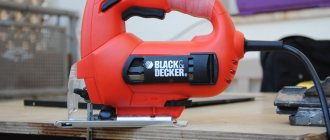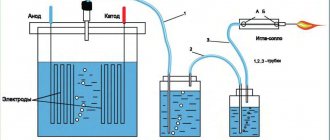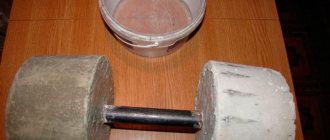Production technology
Coal from wood is consumed in large volumes by metallurgical enterprises, where it is used to produce high-purity alloys, as well as to saturate the metal with carbon, resulting in an increase in its physical properties.
In the chemical industry, this product is used in the manufacture of glass, various plastics and even paints. Coal has not bypassed the food industry; in food products it often acts as a natural coloring agent, which is displayed on their packaging under the code E153.
Such significant demand requires corresponding production volumes, so charcoal stoves are usually located near or on the territory of wood processing enterprises. This is understandable, because there is a large amount of large waste wood of various species there, which serves as raw material for charcoaling.
To explain in simple words, the charcoal production technology is designed to solve the problem of obtaining carbon from wood to the highest possible degree of purity. To do this, all other organic and inorganic substances must be removed, which is achieved using a pyrolysis reaction. Its essence lies in the separation of all unnecessary compounds from raw materials by thermal decomposition in the presence of insufficient oxygen. But let's go in order.
There are four stages of the production process in total (not counting the preliminary preparation of raw materials):
- drying at temperatures up to 150 ºС. The pyrolysis process, which takes place at higher temperatures, requires a minimum amount of moisture in the raw material;
- pyrolysis, which takes place at a temperature of 150-350 ºС and a lack of oxygen. Thermal decomposition of substances occurs and coal begins to form. Pyrolysis gases are released;
- combustion (calcination) when heated to 500-550 ºС. At this stage, tars and residues of substances are released from the coal in the form of gases;
- recovery (cooling).
In essence, a coal production plant is a furnace where all the above reactions take place. The figure below shows a diagram of the technological process:
Scope of application
Charcoal is used in industry for the following purposes:
- for use as part of filters;
- for melting crystalline silicon;
- for use in metallurgy (saturation of steel with carbon, production of pure alloys);
- for the production of glass, some types of plastics, paints;
- for the production of natural dye for the food industry;
- for the production of activated carbon;
- for use in agriculture;
- for use as a convenient household fuel for stoves, fireplaces, barbecues.
When burned in stoves and fireplaces, this type of fuel burns with virtually no flames, providing even and intense heat. The most highly valued product is grade A, which is made from hardwood.
Important! If charcoal is used indoors (for heating or cooking), it is recommended to light it without using chemical kindling agents. This will avoid the appearance of an unpleasant odor and harmful substances falling into the food. In this case, coals are ignited using paper and dry splinters.
Charcoal stove
The charcoal oven is quite complex, and it is very difficult to replicate its design at home. The cylindrical or rectangular body has a combustion chamber, on top of which 2 closed containers filled with raw materials are loaded - retorts. The wood is heated from the outside, through the walls of the retort, and uses the heat generated by the wood during the reaction process. The operation of the furnace in various modes is shown in the diagram:
An industrial furnace for the production of charcoal is designed in such a way that while pyrolysis is taking place in one container, drying is taking place in the second, the pyrolysis gases are burned and pass through a retort with wet raw materials. This sequence is followed further until the final product is obtained. It turns out that the internal volume of each vessel is divided into zones, in each of which a certain process occurs:
After calcination, the containers with coal are unloaded and new ones are placed in the oven. Before packaging and sending to the warehouse, the product undergoes crushing to the required fraction size, and, if necessary, briquetting. The apparatus where all operations are carried out using this technology is a continuous charcoal furnace. However, there is another technology, but it is more complex and expensive, although it provides high performance.
Making charcoal at home
Information about home charcoaling is of interest to those people who are involved in metal forging in small workshops. Clean biofuel such as charcoal has long been considered the best for the forge. Well, everyone has long known how good charcoal is for kebabs and barbecues, but buying it in a store is a little expensive. Based on the fact that equipment for the production of charcoal is complex, expensive and cumbersome, we will offer two methods that have long been proven by home craftsmen:
- burning coal in a barrel;
- charcoaling in a pit.
The method of producing coal in a barrel, as in a pit, involves the same technological process of pyrolysis in a confined space with a lack of oxygen. Only under such conditions the product is not so pure for obvious reasons. The skill of the performer also plays a big role; the first 2-3 portions can simply burn out (which happens more often) or, conversely, not burn out. But everything comes with experience.
The method of charcoaling in a barrel is considered more convenient and technologically advanced. So, to make charcoal yourself, you actually need a metal barrel with a capacity of 200 liters, and even an old vacuum cleaner. Any other cylindrical metal container will do, preferably with thick walls; it will last longer. A hole is drilled at the very bottom of the container and a fitting is inserted. A hose from a vacuum cleaner is connected to it; this will supply primary air to the combustion zone.
It is important to find an airtight lid for the barrel. If there is none, you need to adapt a sheet of metal, asbestos cement or other material for this purpose. You will also need a long steel poker for scooping firewood. Regarding the latter, it is worth noting one important point. Since charcoal is made at home using improvised means, the technology is not always followed, but it is necessary to withstand the low humidity of the firewood.
Important! Freshly cut wood or wood saturated with moisture is not suitable for charcoaling; there will be a lot of smoke, and the pyrolysis process will not begin or will proceed very sluggishly. As a result, you will end up with ash or unburned firewood. The wood must be dry.
The bark is removed from the tree (it smokes a lot, and produces very little coal) and sawed into logs up to 40 cm long, so that they are tightly placed in a barrel. Then light a small fire at its bottom and turn on the vacuum cleaner, otherwise the fire will start to smoke heavily.
As the firewood flares up, you need to add another portion. It should be noted that the production of charcoal in this way is a delicate process; here you need to correctly catch the moment when the raw material has flared up well, but not let it burn to ash, but add new wood. If necessary, you can turn off the vacuum cleaner for a while, and when loading more than half of the container, it is better to insert the air supply pipe from above.
When the barrel is full, it is covered with a lid, the vacuum cleaner is turned off, and the fitting is closed with a plug. Now you need to wait until the processes inside the closed vessel are completed; you can open the lid only after the walls of the container have completely cooled. The convenience of the barrel is that you can simply turn it over and calmly sort the resulting product. Some of the wood will remain unburnt, but it doesn’t matter, it will go to the next load. The rest of the coal is sifted and put into bags.
How to build a coal fire in a private house from boards. What to build from?
What building materials are best for a shed? Strong enough, durable, inexpensive and easy to work with? First of all – boards. A barn can be built from boards alone, see below. Unedged boards are cheap, and a structure made from them can look quite neat and even elegant in the spirit of rustic design, pos. 1 in Fig.
Sheds made of various materials
Note: even cheaper than the “uncut” croaker. It is also possible to build a shed from it alone, see video
below. True, it is more difficult to bring it to an exquisite “rusticism”. The most difficult part of the work is debarking the croaker, i.e. clearing it of bark; it requires a special hand tool, see the next video.
Frame shed, pos. 2 in Fig. above, the most common, because The technology of small frame construction is well mastered by private developers. However, to assemble a frame from timber, as for a change house or other at least temporarily inhabited buildings (these, by the way, include a country toilet with a shower), pos. And in Fig. on the right, not necessarily. More precisely, based on strength requirements, it is mandatory for mobile sheds. And if the structure is placed immediately in its place, then the frame can be assembled from only boards, poses. B. This will make the construction much cheaper if unedged and used boards are used.
Shed frames made of timber and boards
Sometimes a country shed is sheathed with OSB for the sake of aesthetics, pos. 3, or plywood. These materials are susceptible to delamination in the open air, so before painting, a shed with OSB lining must be properly primed, and a plywood shed must be treated twice with a water-polymer emulsion.
Capital barns, especially livestock ones, are most often built from foam blocks, pos. 4. Their lower strength compared to bricks does not play a role in this case, but a shed made of foam blocks is cheaper, easier to work with, warmer in winter and cooler in summer. If you choose one, keep in mind:
- A shed made of foam blocks can be built on a columnar foundation with a wooden crown, like, for example, a bathhouse.
- No more than 3 lower rows are laid on cement-sand mortar, and above that you need to switch to a special adhesive for aerated concrete. The structure is light, and the upper cement joints, which are weakly loaded vertically, can break under lateral wind pressure.
- Having laid the walls to a third of their height, work is interrupted until the masonry mortar hardens, so that the masonry does not float at the seams. The same break is made for 2/3 of the masonry.
Kits of parts for quick-assembled plastic sheds, pos. 5. However, the prices, to put it mildly, are puzzling, firstly. Secondly, for some reason, living creatures in such sheds do not take root. Perhaps for the same reasons, whatever they may be, why people do not live in plastic houses.
Charcoaling in a pit
You can make charcoal yourself at home or right in the forest simply in a hole. To get 2 bags of coal, you need to dig a round hole approximately 80 cm in diameter and half a meter deep.
The bottom is trampled down with feet, and the walls are cleaned so that the fuel does not mix with the ground. The latter does not need to be thrown far, it will come in handy in the end. The difference with “barrel” burning is only in the absence of forced pressurization with a vacuum cleaner. Dry firewood is taken, 30 cm long and no more than 7 cm in diameter, and a small fire is built from it at the bottom of the pit.
Further actions - as in the case of a barrel, raw materials are added as needed. A pit full of firewood is covered with leaves or grass, then covered with earth and compacted. You can come back for coal in 2 days, by which time it will definitely have cooled down.
Selection and preparation of raw materials
How to make charcoal at home? There are several ways to produce wood fuel: in a pit, in a kiln or in a barrel. Each method has its pros and cons.
Regardless of the chosen technique, consumables are first prepared. You will need:
- twigs, branches, paper, husks for lighting a fire;
- cleaned and dried wood;
- container made of metal, plastic or wood;
- tools – saw, knife, axe.
Not just any wood is suitable for making charcoal. It is advisable to use fruit trees (cherry, apple), deciduous (birch, maple, oak). Conifers are not suitable because they contain a lot of resin.
Also, you cannot use chipboard, MDF, or waste from the construction industry - such raw materials contain glue and other harmful substances, and when burned, they release toxic fumes. Rotten wood and bark are not suitable for coal production - they will deteriorate the quality of the finished product. Charcoal is produced by pyrolysis. Firewood must be well dried.











